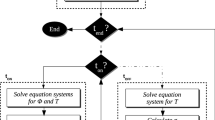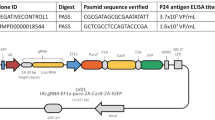Abstract
Pulsed electric fields can enhance interstitial transport of plasmid DNA (pDNA) in solid tumors. However, the extent of enhancement is still limited. To this end, the effects of cellular resistance to electric field-mediated gene delivery were investigated. The investigation used two tumor cell lines (4T1 (a murine mammary carcinoma) and B16.F10 (a metastatic subline of B16 murine melanoma)) either in suspensions or implanted in two in vivo models (dorsal skin-fold chamber (DSC) and hind leg). The volume fraction of cells was altered by pretreatment with a hyperosmotic mannitol solution (1 M). It was observed that the pretreatment reduced the volumes of 4T1 and B16.F10 cells, suspended in an agarose gel, by 50 and 46%, respectively, over a 20-min period, but did not cause significant changes ex vivo in volumes of hind-leg tumor tissues grown from the same cells in mice. The mannitol pretreatment in vivo improved electric field-mediated gene delivery in the hind-leg tumor models, in terms of reporter gene expression, but resulted in minimal enhancement in pDNA electrophoresis over a few microns distance in the DSC tumor models. These data demonstrated that hyperosmotic mannitol solution could effectively improve electric field-mediated gene delivery around individual cells in vivo by increasing the extracellular space.
This is a preview of subscription content, access via your institution
Access options
Subscribe to this journal
Receive 12 print issues and online access
$259.00 per year
only $21.58 per issue
Buy this article
- Purchase on Springer Link
- Instant access to full article PDF
Prices may be subject to local taxes which are calculated during checkout





Similar content being viewed by others
References
Cemazar M, Golzio M, Sersa G, Rols MP, Teissie J . Electrically-assisted nucleic acids delivery to tissues in vivo: where do we stand? Curr Pharm Des 2006; 12: 3817–3825.
Mir LM, Moller PH, Andre F, Gehl J . Electric pulse-mediated gene delivery to various animal tissues. Adv Genet 2005; 54: 83–114.
Prud'homme GJ, Glinka Y, Khan AS, Draghia-Akli R . Electroporation-enhanced nonviral gene transfer for the prevention or treatment of immunological, endocrine and neoplastic diseases. Curr Gene Ther 2006; 6: 243–273.
Heller LC, Heller R . In vivo electroporation for gene therapy. Hum Gene Ther 2006; 17: 890–897.
Neumann E, Schaefer-Ridder M, Wang Y, Hofschneider PH . Gene transfer into mouse lyoma cells by electroporation in high electric fields. EMBO J 1982; 1: 841–845.
Wolf H, Rols MP, Boldt E, Neumann E, Teissie J . Control by pulse parameters of electric field-mediated gene transfer in mammalian cells. Biophys J 1994; 66 (Part 1): 524–531.
Mir LM, Bureau MF, Gehl J, Rangara R, Rouy D, Caillaud JM et al. High-efficiency gene transfer into skeletal muscle mediated by electric pulses. Proc Natl Acad Sci USA 1999; 96: 4262–4267.
Wells JM, Li LH, Sen A, Jahreis GP, Hui SW . Electroporation-enhanced gene delivery in mammary tumors. Gene Ther 2000; 7: 541–547.
Lohr F, Lo DY, Zaharoff DA, Hu K, Zhang X, Li Y et al. Effective tumor therapy with plasmid-encoded cytokines combined with in vivo electroporation. Cancer Res 2001; 61: 3281–3284.
Li S . Delivery of DNA into tumors. Methods Mol Biol 2008; 423: 311–318.
Bureau MF, Gehl J, Deleuze V, Mir LM, Scherman D . Importance of association between permeabilization and electrophoretic forces for intramuscular DNA electrotransfer. Biochim Biophys Acta 2000; 1474: 353–359.
Satkauskas S, Andre F, Bureau MF, Scherman D, Miklavcic D, Mir LM . Electrophoretic component of electric pulses determines the efficacy of in vivo DNA electrotransfer. Hum Gene Ther 2005; 16: 1194–1201.
Henshaw JW, Mossop BJ, Yuan F . Relaxin treatment of solid tumors: effects on electric field-mediated gene delivery. Mol Cancer Ther 2008; 7: 2566–2573.
Henshaw JW, Yuan F . Field distribution and DNA transport in solid tumors during electric field-mediated gene delivery. J Pharm Sci 2008; 97: 691–711.
Henshaw JW, Zaharoff DA, Mossop BJ, Yuan F . Electric field-mediated transport of plasmid DNA in tumor interstiitum in vivo. Bioelectrochemistry 2007; 71: 233–242.
Mossop BJ, Barr RC, Henshaw JW, Yuan F . Electric fields around and within single cells during electroporation-a model study. Ann Biomed Eng 2007; 35: 1264–1275.
Zaharoff DA, Barr RC, Li CY, Yuan F . Electromobility of plasmid DNA in tumor tissues during electric field-mediated gene delivery. Gene Ther 2002; 9: 1286–1290.
Netti PA, Berk DA, Swartz MA, Grodzinsky AJ, Jain RK . Role of extracellular matrix assembly in interstitial transport in solid tumors. Cancer Res 2000; 60: 2497–2503.
Pluen A, Boucher Y, Ramanujan S, McKee TD, Gohongi T, di Tomaso E et al. Role of tumor-host interactions in interstitial diffusion of macromolecules: cranial vs. subcutaneous tumors. Proc Natl Acad Sci USA 2001; 98: 4628–4633.
Ramanujan S, Pluen A, McKee TD, Brown EB, Boucher Y, Jain RK . Diffusion and convection in collagen gels: implications for transport in the tumor interstitium. Biophys J 2002; 83: 1650–1660.
Mossop BJ, Barr RC, Henshaw JW, Zaharoff DA, Yuan F . Electric fields in tumors exposed to external voltage sources: implication for electric field-mediated drug and gene delivery. Ann Biomed Eng 2006; 34: 1564–1572.
Lu D, Wientjes MG, Lu Z, Au JL . Tumor priming enhances delivery and efficacy of nanomedicines. J Pharmacol Exp Ther 2007; 322: 80–88.
Griffon-Etienne G, Boucher Y, Brekken C, Suit HD, Jain RK . Taxane-induced apoptosis decompresses blood vessels and lowers interstitial fluid pressure in solid tumors: clinical implications. Cancer Res 1999; 59: 3776–3782.
Minchinton AI, Tannock IF . Drug penetration in solid tumours. Nat Rev Cancer 2006; 6: 583–592.
Schrot RJ, Muizelaar JP . Mannitol in acute traumatic brain injury. Lancet 2002; 359: 1633–1634.
Lameire NH, De Vriese AS, Vanholder R . Prevention and nondialytic treatment of acute renal failure. Curr Opin Crit Care 2003; 9: 481–490.
Kroll RA, Neuwelt EA . Outwitting the blood-brain barrier for therapeutic purposes: osmotic opening and other means. Neurosurgery 1998; 42: 1083–1099.
McGuire S . Quantitative analysis of intratumoral infusion therapy and macromolecule movement in tumor tissue. PhD Dissertation. Duke University: Durham, 2004.
Zaharoff DA, Yuan F . Effects of pulse strength and pulse duration on in vitro DNA electromobility. Bioelectrochemistry 2004; 62: 37–45.
Henshaw JW, Zaharoff DA, Mossop BJ, Yuan F . A single molecule detection method for understanding mechanisms of electric field-mediated interstitial transport of genes. Bioelectrochemistry 2006; 69: 248–253.
Chen Q, Tong S, Dewhirst MW, Yuan F . Targeting tumor microvessels using doxorubicin encapsulated in a novel thermosensitive liposome. Mol Cancer Ther 2004; 3: 1311–1317.
McManus ML, Soriano SG . Rebound swelling of astroglial cells exposed to hypertonic mannitol. Anesthesiology 1998; 88: 1586–1591.
Sandberg DI, Edgar MA, Souweidane MM . Effect of hyperosmolar mannitol on convection-enhanced delivery into the rat brain stem. J Neurooncol 2002; 58: 187–192.
Cartee LA, Plonsey R . The transient subthreshold response of spherical and cylindrical cell models to extracellular stimulation. IEEE Trans Biomed Eng 1992; 39: 76–85.
Arima H, Yamamoto N, Sobue K, Umenishi F, Tada T, Katsuya H et al. Hyperosmolar mannitol simulates expression of aquaporins 4 and 9 through a p38 mitogen-activated protein kinase-dependent pathway in rat astrocytes. J Biol Chem 2003; 278: 44525–44534.
Muto S, Ohtaka A, Nemoto J, Kawakami K, Asano Y . Effects of hyperosmolality on Na, K-ATPase gene expression in vascular smooth muscle cells. J Membr Biol 1998; 162: 233–245.
Burg MB, Ferraris JD, Dmitrieva NI . Cellular response to hyperosmotic stresses. Physiol Rev 2007; 87: 1441–1474.
Duchler M, Pengg M, Brunner S, Muller M, Brem G, Wagner E . Transfection of epithelial cells is enhanced by combined treatment with mannitol and polyethyleneglycol. J Gene Med 2001; 3: 115–124.
Heller LC, Ugen K, Heller R . Electroporation for targeted gene transfer. Expert Opin Drug Deliv 2005; 2: 255–268.
Gehl J . Electroporation: theory and methods, perspectives for drug delivery, gene therapy and research. Acta Physiol Scand 2003; 177: 437–447.
Tamura T, Sakata T . Application of in vivo electroporation to cancer gene therapy. Curr Gene Ther 2003; 3: 59–64.
Hofmann GA, Dev SB, Nanda GS, Rabussay D . Electroporation therapy of solid tumors. Crit Rev Ther Drug Carrier Syst 1999; 16: 523–569.
Acknowledgements
This work was supported in part by a grant from the National Institutes of Health (CA94019).
Author information
Authors and Affiliations
Corresponding author
Ethics declarations
Competing interests
The authors declare no conflict of interest.
Rights and permissions
About this article
Cite this article
Henshaw, J., Mossop, B. & Yuan, F. Enhancement of electric field-mediated gene delivery through pretreatment of tumors with a hyperosmotic mannitol solution. Cancer Gene Ther 18, 26–33 (2011). https://doi.org/10.1038/cgt.2010.51
Received:
Revised:
Accepted:
Published:
Issue Date:
DOI: https://doi.org/10.1038/cgt.2010.51
Keywords
This article is cited by
-
Improvement in Electrotransfection of Cells Using Carbon-Based Electrodes
Cellular and Molecular Bioengineering (2016)
-
Physical Non-Viral Gene Delivery Methods for Tissue Engineering
Annals of Biomedical Engineering (2013)
-
In Vivo Molecular Imaging and Histological Analysis of Changes Induced by Electric Pulses Used for Plasmid DNA Electrotransfer to the Skin: A Study in a Dorsal Window Chamber in Mice
The Journal of Membrane Biology (2012)



